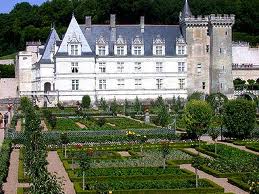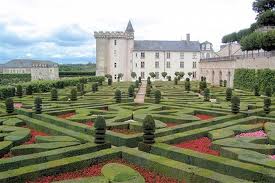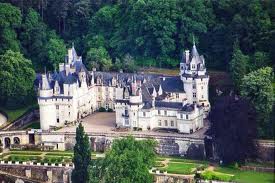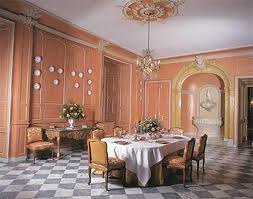Never the residence of royalty, the Château de Villandry is known not for its troubled history but for its breathtaking gardens. The castle was in the Breton family for over two centuries after its acquisition in the early 16th century, but it was Joachim Carvallo who bought the château in 1906 and transformed the place.

Today any mention of Villandry makes gardeners go weak at the knees as the gardens planted by Carvallo and his wife are considered some of the best in the world.
The lands on which the Chateau de Villandry stands were once home to an ancient fortress known as Colombier with a prestigious past.
On 4th July 1148 the "Paix de Colombiers" was signed there by Henry II Plantagenet, the King of England, acknowledging his defeat before King of France, at that time, Philippe Auguste. When Jean Le Breton acquired the land in the early 16th century, he razed the 12th century castle, keeping only the tower that can be seen in the main courtyard.
Jean Le Breton was one of François I’s Finance Ministers. He had overseen the construction of the Château de Chambord and had decided to build himself a magnificent estate.
Before the Finance minister gig, Le Breton had first been ambassador to Italy where he had become a big fan of the Italian Renaissance which then influenced his gardening.

The Breton family kept Château de Villandry until 1754. It was then sold to the Marquis de Castellane, who was the the King’s Ambassador. The Marquis's family was a prominent and noble one from Provence.
He was keen to improve and modernize the chateau so he redesigned the interior to meet 18th century standards of comfort. He built the classical style outer buildings that can be found on both sides of the front courtyard.
During the French Revolution the property was confiscated as was the standard practice but in the early 19th century Emperor Napoleon decided to give it (and most of Spain) to his brother, Joseph Bonaparte.
The traditional gardens were destroyed, by whom we don't know, to be replaced by an English-style park around the chateau.

In 1906 salvation arrived for Villandry in the shape of a brilliant scientist no less.
Of Spanish origin, Joachim Carvallo, along with his American wife, devoted half their lives to the restoration of Villandry and in the process created what many consider to be some of the most beautiful gardens in the world.
Giving up a glowing scientific career with Professor Charles Richet, the winner of the Nobel Prize in 1913, Carvallo devoted himself, and a lot of time and money to the restoration of Château de Villandry.
In doing so Carvallo (and his wife) saved the château from imminent demolition and created the present day gardens which are completely harmonious with the castle's Renaissance architecture.
Their passion resulted in truly beautiful gardens organized into three terraces combining French and Italian styles. Depending where they're seen from, some of the garden terraces resemble magnified chessboards colored by flowers an awe-inspiring sight.
The famous vegetable garden is beyond the water garden and should not be missed. The pumpkins are works of art on their own. The main jardin à la française (French-style garden) will delight flower lovers - the epic carpets of vibrant color are planted en broderie ("like embroidery"), set into intricate patterns by box hedges and paths.

The aromatic and medicinal garden (very helpfully labeled in three languages) is especially engaging.
The oriental lake, whose approach is heralded by an avenue of 1,200 immaculate lime trees is particularly picturesque.
Don't get too seduced by the gardens and miss out on the Château de Villandry's interior though. It was redecorated in the mid-18th century and boasts a spectacular paint and gilt Moorish ceiling from Toledo and one of the finest collections of 17th-century Spanish paintings in France.
Numerous trains from Paris make the trip daily — and several directly from Charles de Gaulle Airport. This includes the high-speed TGV, although to be honest it's not strictly necessary as the trip only takes a few hours. There are convenient connections to smaller towns if you take local trains.
The best time to visit the chateau is usually during the two-hour French lunch break when everyone else is busy eating. The Nuits des Mille Feux (Nights of a Thousand Lights) takes place in early July and offers some fantastic photo opportunities. The paths and pergolas are illuminated with myriad lanterns making Villandry a magical place.